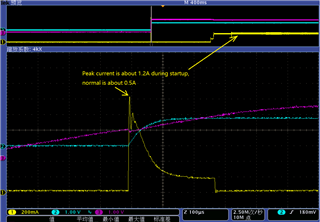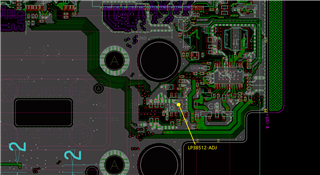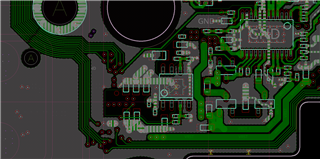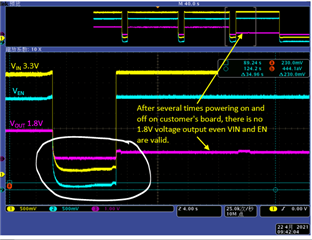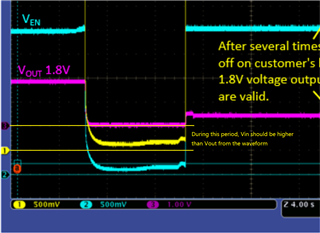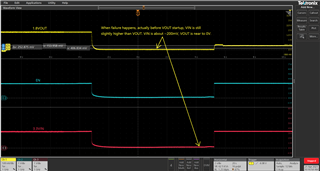Other Parts Discussed in Thread: LP38512,
Hi Team,
Our customer is using LP38512-ADJ for 3.3V to 1.8V application for DLP DMD power supply, but recently they found there is about 1 in 10000 probability for LP38512 no 1.8V output issue after many times powering on and off. We captured some waveform as below, can you help to analysis what's the possible cause for this behavior?
Thanks.



